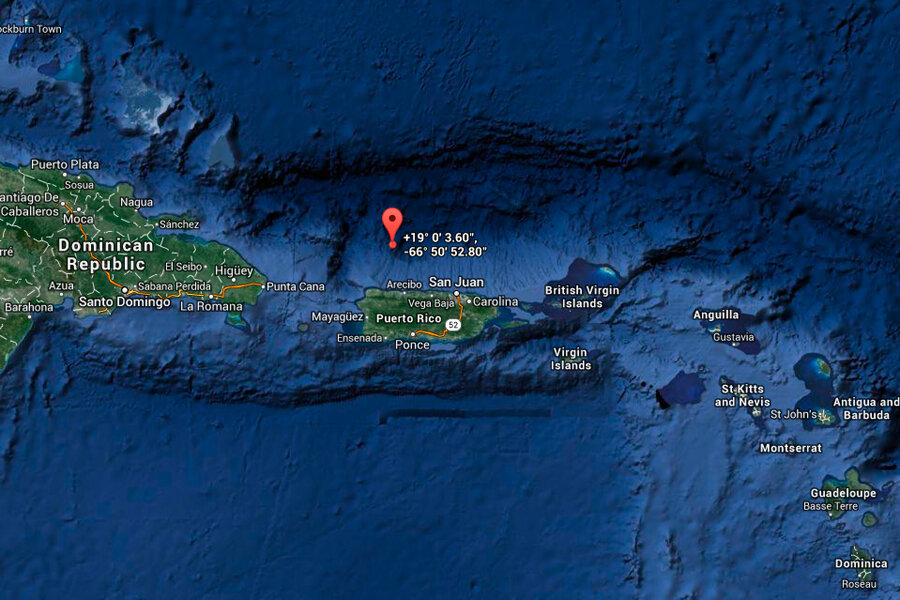Puerto Rico earthquake is largest in US in recent years
Loading...
| San Juan, Puerto Rico
A strong earthquake out to sea that shook Puerto Rico early Monday is one of the largest to hit US territory in recent years, cracking floors and causing some power outages, but no major damages or injuries, officials said.
The 6.4-magnitude quake struck just after midnight about 35 miles (57 kilometers) north of Hatillo, at a depth of 17 miles (28 kilometers), according to the U.S. Geological Survey.
At least 70 aftershocks have been reported since then, with at least three of a magnitude 3.5 or greater, said Gisela Baez Sanchez, a geologist with Puerto Rico's Seismic Network.
"All of Puerto Rico is in a seismic danger zone," she said in a phone interview. "We have to be prepared."
Broken windows, a busted water line and cracked floors and walls were reported in some areas along the north coast, while authorities said power outages occurred in the north city of Bayamon, close to the island's capital. Dozens of people said they felt buildings sway in the capital of San Juan, about 61 miles (98 kilometers) from the quake's epicenter.
Hundreds of people called Puerto Rico's emergency management agency, but no injuries or major damages have been reported, spokesman Carlos Acevedo said in a phone interview.
The agency did not emit a tsunami alert, he said.
"The damages have been minor," Acevedo said. "No one has required our services."
However, Puerto Ricans criticized the island's government through social media, saying that no emergency alert was issued immediately after the quake. Authorities said they would have sent an alert immediately if people had been at risk of a tsunami.
One of the largest and most damaging earthquakes to hit Puerto Rico occurred in October 1918, when a 7.3-magnitude quake struck near the island's northwest coast, unleashing a tsunami and killing 116 people.
While Puerto Rico experiences small earthquakes daily that people cannot feel, it is rare for bigger quakes to strike the island, Baez said. Among those was a 5.4-magnitude quake that shook the U.S. territory in March 2011 and another one of the same magnitude that struck on Christmas Eve in 2010.
Baez said Monday's earthquake occurred along a fault previously generated by two tectonic plates crashing into each other.
Copyright 2014 The Associated Press. All rights reserved. This material may not be published, broadcast, rewritten or redistributed.







